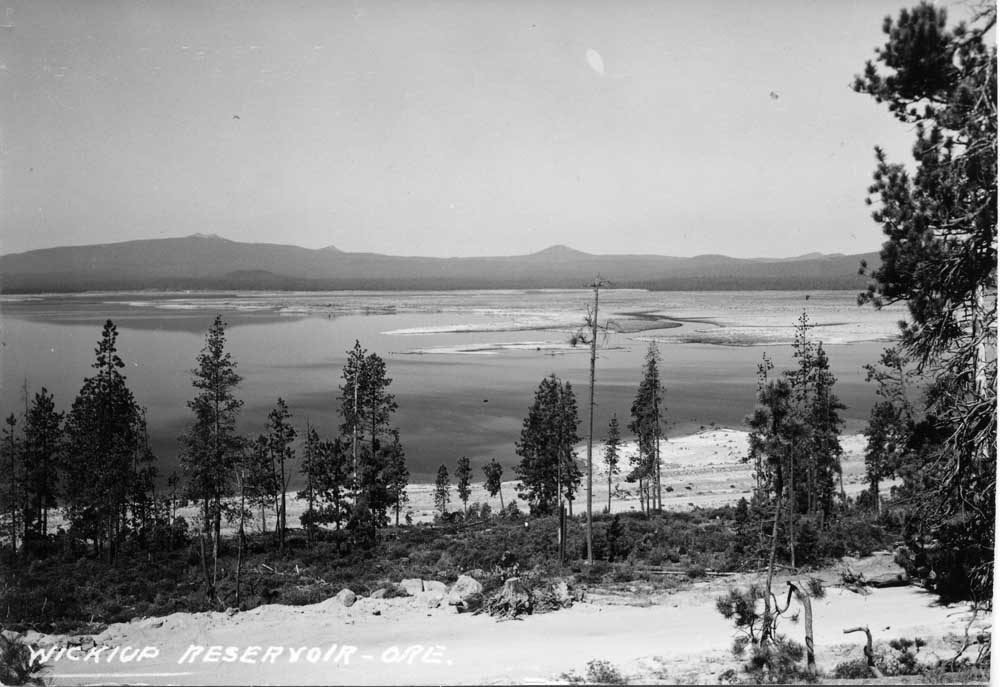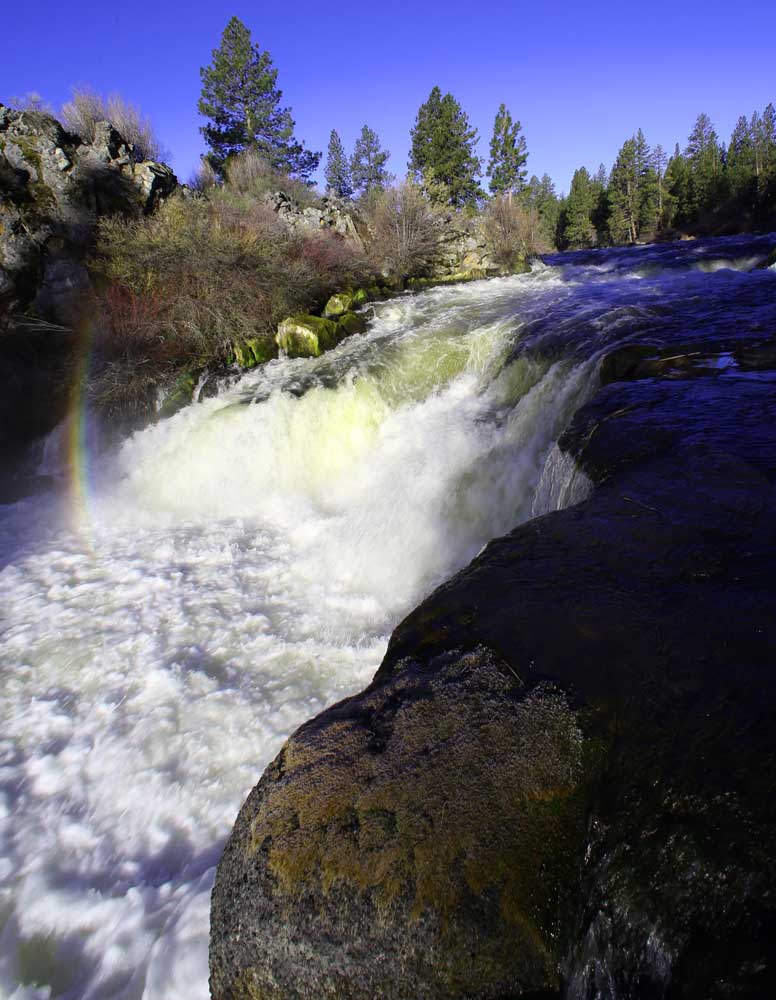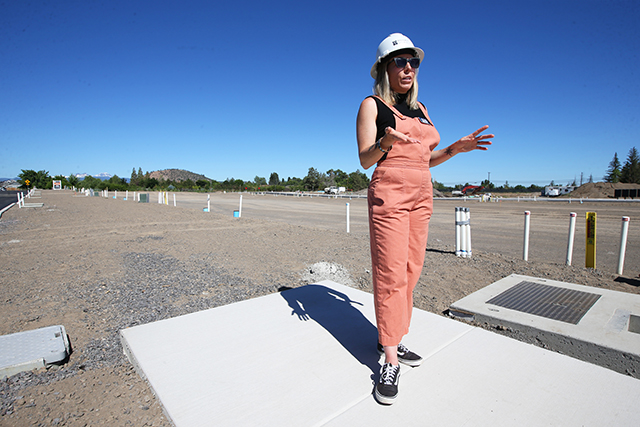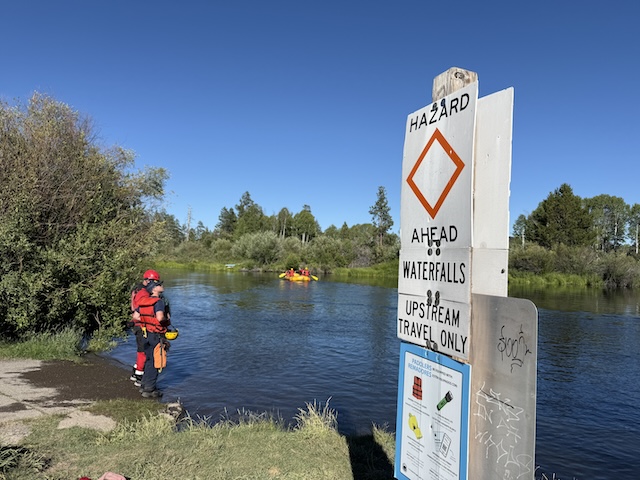A Dynamic Development
Published 12:00 am Saturday, July 23, 2016

- A Dynamic Development
More than 10,000 years ago Native Americans camped and fished in the Wickiup area during the fall and their domed dwellings, called “Wikiups,” resulted in the reservoir’s namesake. Now one of the most popular and productive recreation areas in Central Oregon, Wickiup Dam and Reservoir has significantly improved quality of life by providing farming and recreation opportunities.
Construction of the Wickiup Dam began in 1939 with Civilian Conservation Corps workers clearing 717 acres of forest 40 miles southwest of Bend, in what ultimately lead to the largest log drive in Central Oregon and the last major log drive in all of Oregon.
Trending
The building of the dam — which took 10 years to complete — was a part of the Deschutes Project, passed by Congress in 1937 and managed by the Unites States Bureau of Reclamation (USBR) to aid in irrigation to help farmers on the High Desert.
In the 1920s farming in Deschutes County thrived under the natural, steady flows from the Deschutes River. The growing season was limited, however, dependant on snow runoff. So when the Great Depression and a severe drought hit the West in the 1930s, engineers and irrigators began planning for the Deschutes Project to help Central Oregon’s agriculture and economy.
In his research essay titled “The Deschutes Project History” Robert Autobee wrote: “A venture not initially popular with water users and engineers, the success of the Deschutes Project illustrates that compromise and adaptability pays in the long run. Deschutes represented opportunities for a previous neglected region to grow, to introduce diverse farming practices, and provided a chance for a group of young men to gain a sense of accomplishment and develop in a time when opportunities had been just about crushed by the Depression. It is a legacy of achievement that overshadows the circumstances surrounding the project’s beginnings.”
While the largest reservoir in Oregon is the Owyhee Reservoir in Malheur County, Wickiup Reservoir is the second largest and stores water for the irrigation of lands in the North Unit Irrigation District (NUID) with a total capacity of 200,000 acre-feet. (An acre-foot is defined as the volume of one acre of surface area to a depth of one foot. The estimated annual amount of water used by a suburban family household is one acre-foot, which is approximately 893 gallons per day).
“The impact of Wickiup and irrigation to Central Oregon is undeniable,” stated Mike Britton, general manager of the NUID. “Wickiup is the backbone of agriculture in Central Oregon. Crane Prairie and Wickiup Reservoirs are an integral part of irrigation in Central Oregon and have significantly impacted the physical, cultural and economic landscape of the past century.
“NUID works closely with the Deschutes Basin Board of Control to ensure this rich irrigation history and culture survives the many challenges we face today. Simply put, without Wickiup Reservoir and the water it supplies, agriculture in Central Oregon as we know it today would cease to exist,” Britton said.
Trending
Today, Wickiup Reservoir is perhaps the busiest in terms of recreational use among the many lakes accessible from the Cascade Lakes Highway. It is a popular fishery holding large brown trout, rainbow trout, coho salmon and kokanee. In May of 2007 a Madras man landed a 25 pound brown trout using a nightcrawler and 12 pound test. It was one of the largest brown trout ever landed at Wickiup.
“ODFW currently manages the fisheries and angling opportunity at Wickiup. We set angling regulations to manage harvest and ensure there is sufficient natural production to sustain the fish populations,” said Brett Hodgson, Oregon Department of Fish and Wildlife Deschutes District Fish Biologist. “We do not stock Wickiup with hatchery fish at all. It is entirely supported by natural production.”
Since the water in Wickiup Reservoir is used for irrigation, the water levels vary significantly throughout the fishing season (which runs from the last Saturday in April until October 31st).
The fluctuations in water levels put stress on fish to adapt. In the fall of 2013 water levels fell so low that hundreds of rainbow and brown trout died after becoming stuck in a side channel near Island Falls.
“Unfortunately, the browns at Wickiup are under tremendous pressure from many sides. While I would love to talk about how great the fly fishing is at Wickiup, that simply wouldn’t be the truth,” said Brett Dennis, fly fishing guide at Stillwater Fly Shop in Bend. “Ten years ago it would. Today it’s not the same fishery. We need to protect these fisheries if we expect them to produce like they did in days of old.”
According to a 2012 report from the Deschutes River Conservancy, “Low flows in the winter significantly impact fish populations. Low flows reduce available habitat, expose spawning gravels, and can accelerate freezing, further reducing available habitat. High summer flows without established stream structure such as log jams create velocities too high to support resident aquatic populations.”
Despite the environmental concerns, Wickiup continues to be a popular fishing site. Additional recreation on the waterway includes boating and other watersports. There are six campgrounds located on the shores of Wickiup Reservoir and they all include a boat ramp, water and bathrooms. Wickiup also offers excellent wildlife viewing because it attracts a wide variety of nesting and migratory birds.
“The popularity of Wickiup as a nature-observing location is largely a product of the seasonally abundant wildlife populations that utilize Wickiup for nesting and foraging.,” said Hodgson. “Particularly noteworthy are the concentrations of bald eagles and osprey that feed on spawning kokanee in the fall.”
The impact of Wickiup Reservoir in developing a dynamic farming and agricultural economy in Central Oregon is undeniable. Without the dam this region may very well have been abandoned by early settlers after the timber boom. Wickiup continues to not only support irrigation for farming today, but also offers a wide range of outdoor recreational opportunities for Central Oregonians and draws visitors from near and far.








